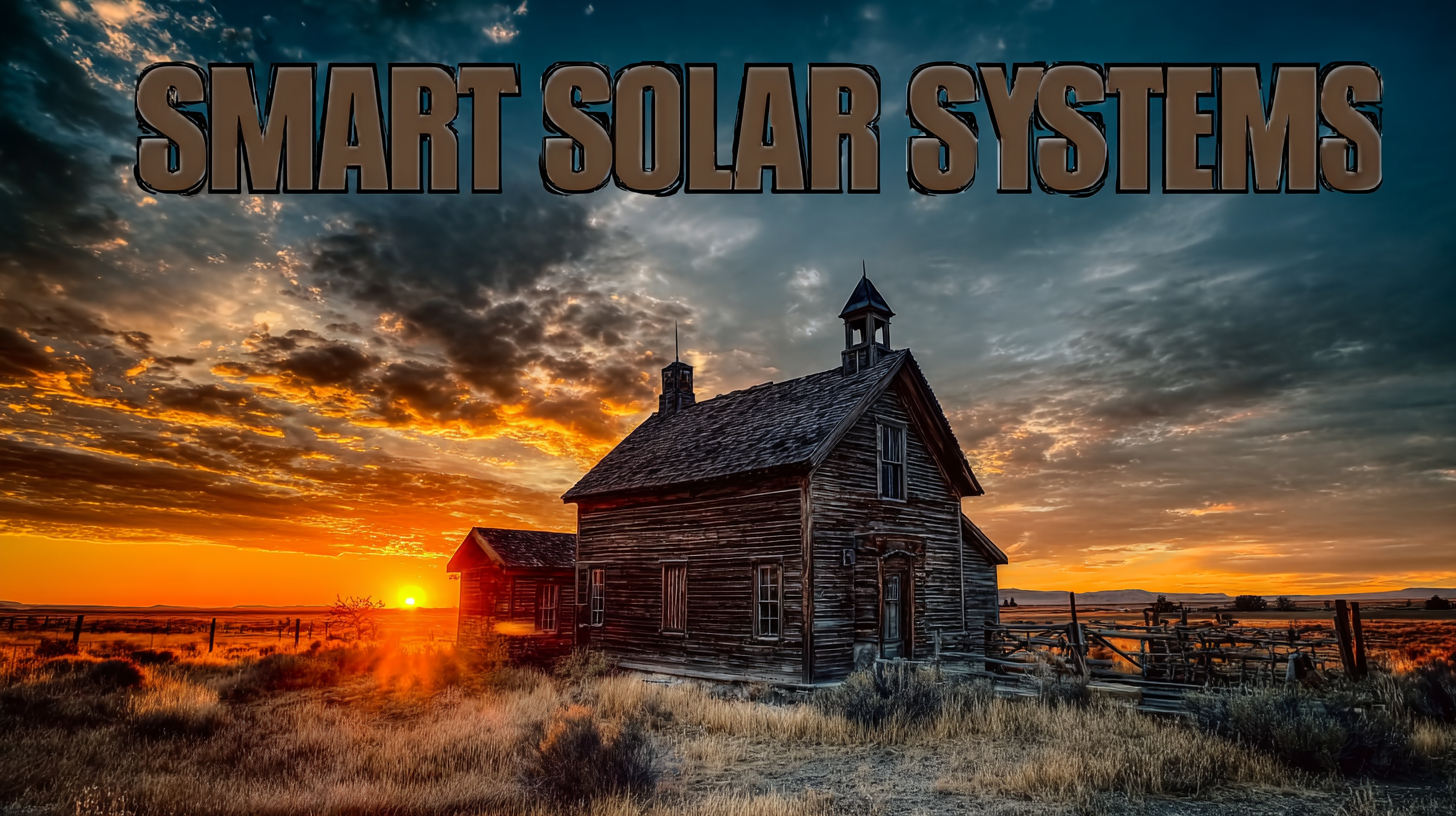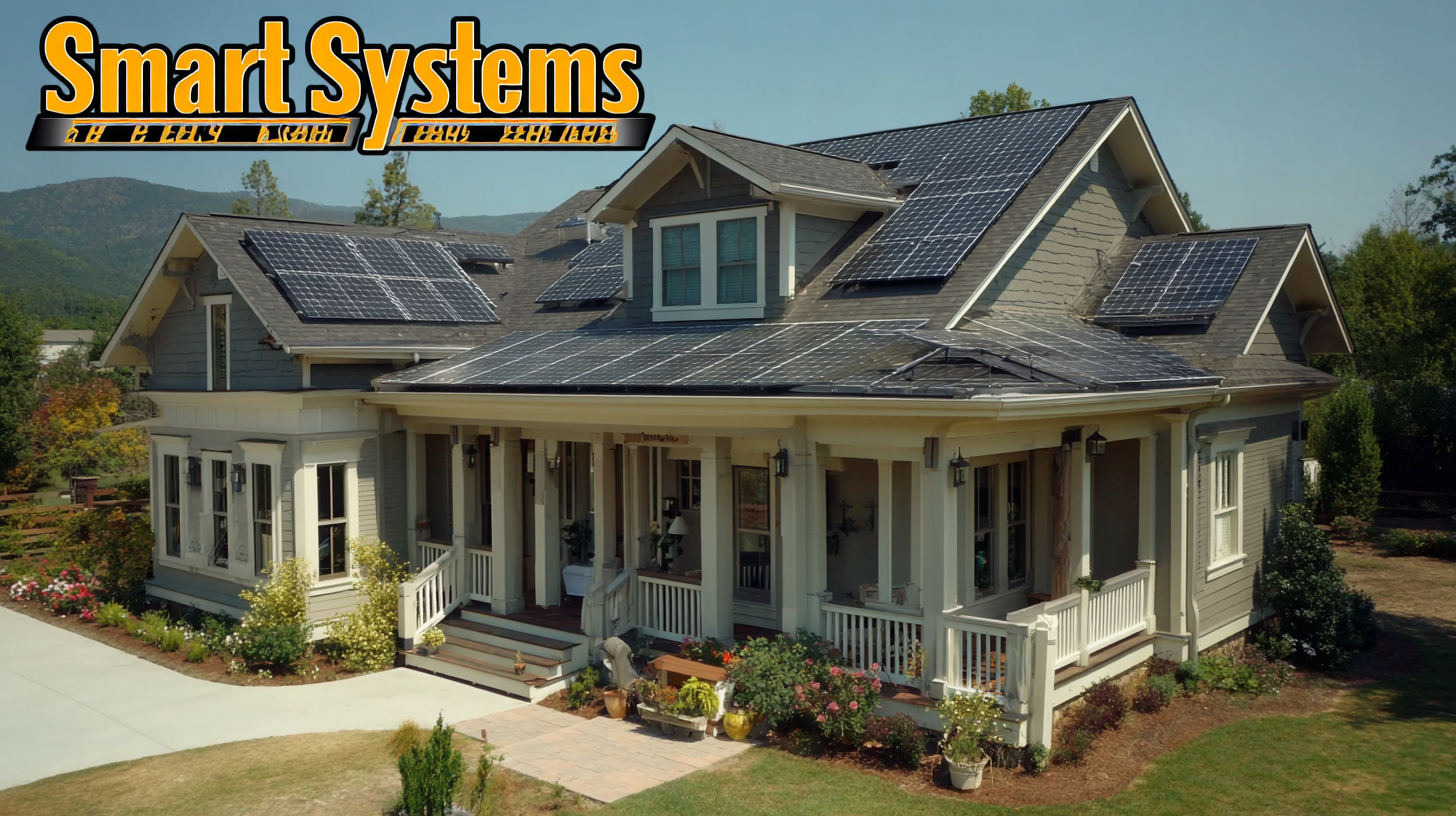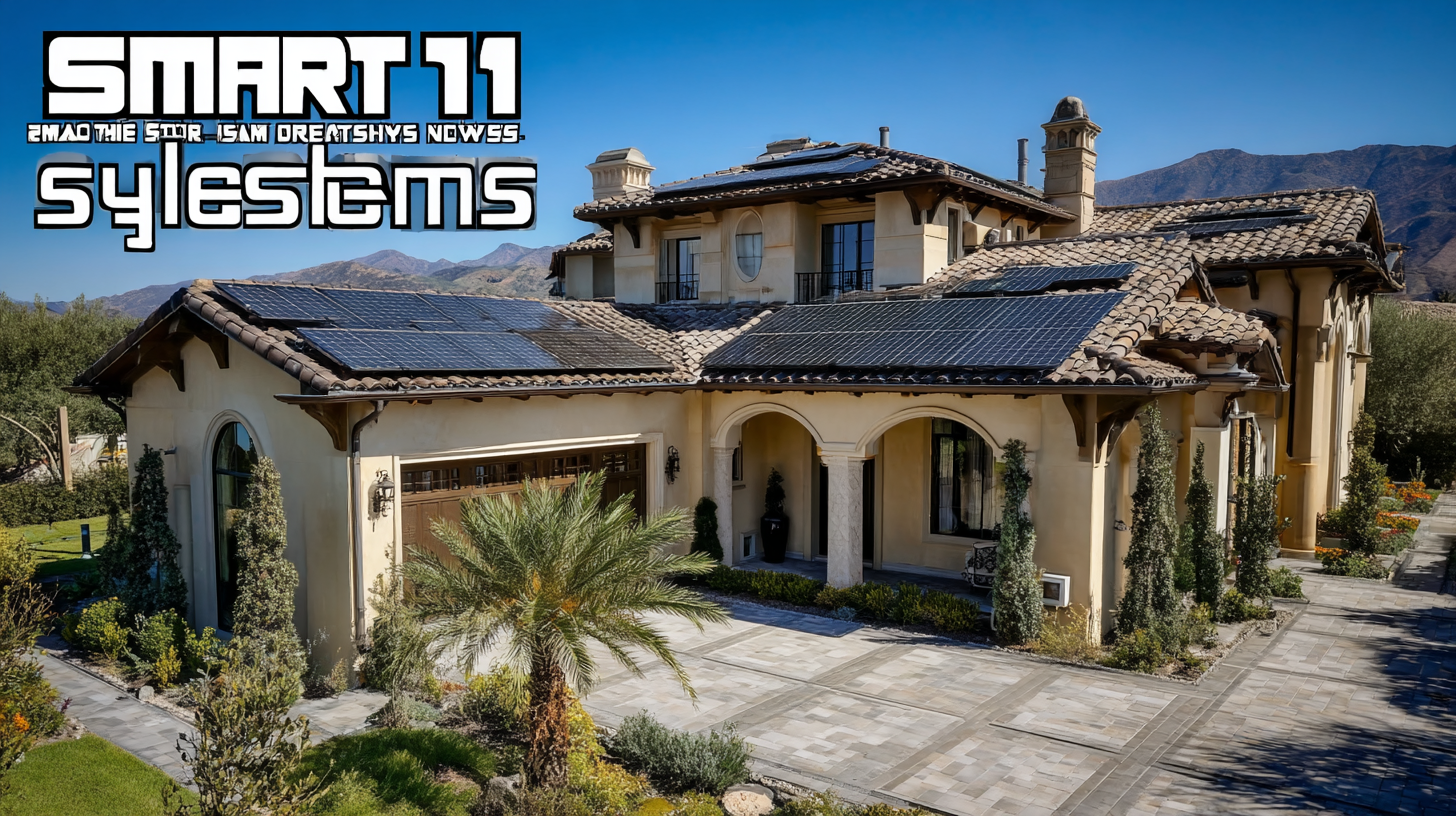How to Choose the Best Smart Solar Systems for Your Home Needs
In today's world, the transition to renewable energy sources has never been more critical, and Smart Solar Systems are at the forefront of this revolutionary change. As homeowners increasingly seek sustainable solutions to power their residences, selecting the right solar system has become a pivotal decision that goes beyond simple cost considerations. This blog aims to guide you through the process of choosing the best Smart Solar Systems tailored to your home needs.

We will discuss how to identify reputable manufacturers, evaluate their offerings, and compare different types of solar solutions available in the market. Understanding these factors will empower you to make an informed choice that not only meets your energy requirements but also aligns with your long-term sustainability goals. Join us as we explore the essential criteria for making the best investment in solar technology for your home.
Understanding Your Energy Requirements for Smart Solar Systems
When selecting the best smart solar systems for your home needs, understanding your energy requirements is crucial. Start by assessing your household’s energy consumption patterns. According to the latest renewable energy industry outlook, the demand for solar energy is expected to continue rising, particularly as residential and commercial sectors strive to achieve sustainability goals. In fact, the International Energy Agency reported that solar power could become the largest source of electricity by 2025, driven by advancements in technology and efficiency.
Integrating smart technology can enhance your solar system’s productivity. For instance, the use of smart PV-trackers allows solar panels to adjust their positioning to capture maximum sunlight throughout the day, optimizing energy generation. Additionally, smart grids can provide real-time data on energy usage and supply, ensuring that you make the most of your solar installation. The growing implementation of these technologies not only supports the transition to renewable energy but also addresses the urgent need for reliable power sources, especially in regions where solar power is becoming a pivotal solution for energy demands.
How to Choose the Best Smart Solar Systems for Your Home Needs
| Dimension | Details |
|---|---|
| Energy Consumption (kWh/month) | 500 |
| Average Sunlight Hours/Day | 5 |
| System Size (kW) | 6 |
| Estimated Monthly Output (kWh) | 900 |
| Cost of System Installation ($) | 15,000 |
| Payback Period (years) | 5 |
| Incentives Available ($) | 3,000 |
| Battery Storage (kWh) | 10 |
Key Features to Look for in Smart Solar Technologies
When choosing the best smart solar systems for your home, it’s crucial to focus on key features that will enhance efficiency and usability. First, consider the advanced monitoring capabilities that many smart solar technologies offer. These systems often come equipped with real-time data tracking, allowing homeowners to monitor energy production and consumption through mobile apps. This transparency not only helps in maximizing energy savings but also in identifying potential issues before they escalate.
Another vital feature to look for is energy storage integration. As climate change becomes an increasingly pressing concern, the ability to store solar energy for later use can significantly reduce reliance on traditional power sources. Systems that are compatible with battery storage solutions enable you to harness excess energy generated during sunny days, providing a reliable power source during peak usage times or outages. Moreover, smart integrations such as automated energy management systems can optimize the use of stored energy, contributing to a more sustainable and efficient home.

Evaluating Solar Panel Types and Their Efficiency
When choosing a smart solar system for your home, understanding the types of solar panels available and their efficiency is crucial. The two primary types of solar panels are monocrystalline and polycrystalline. Monocrystalline panels boast an average efficiency rate of around 15-22%, making them a popular choice for homeowners with limited roof space. Their high conversion efficiency and longer lifespan often justify the higher initial investment. According to the National Renewable Energy Laboratory, monocrystalline panels are typically more efficient in low-light conditions, which is an advantage in areas that experience frequent cloud cover.
On the other hand, polycrystalline panels offer a more cost-effective solution with efficiency ratings ranging from 13-16%. While they tend to take up more space due to a larger number of cells needed to produce the same amount of power, their lower cost can be appealing for those looking to invest in renewable energy without breaking the bank. A recent report by the Solar Energy Industries Association (SEIA) indicates that the market share for polycrystalline panels is gradually increasing due to advancements in manufacturing techniques that enhance their performance and durability. Ultimately, your choice should align with your home's energy needs, budget, and available space to ensure optimal solar efficiency.
Assessing Installation and Maintenance Considerations
When assessing installation for smart solar systems, it's crucial to consider both the technical and environmental aspects. First, evaluate the orientation and roof angle of your home. South-facing roofs typically receive the most sunlight, making them ideal for solar panel placement. Additionally, consider potential shading from trees or nearby structures that could affect performance. Hiring a certified solar installer can help determine the best positioning for maximum energy efficiency.

Maintenance is another key factor to keep in mind. Regularly inspecting your solar panels for dirt, debris, or damage can significantly enhance their performance and lifespan. A good rule of thumb is to clean the panels every six months, especially in areas with heavy dust or bird activity. Also, choose a system with a robust monitoring app that allows you to track energy production in real-time, ensuring any issues can be detected and addressed promptly.
Comparing Costs: Understanding the Financial Aspects and Savings
When considering a smart solar system for your home, understanding the financial aspects is crucial to making an informed decision. Start by evaluating the initial costs, which can vary significantly based on system size, type of panels, and installation fees. While the upfront investment may seem daunting, many homeowners find that the long-term savings on electricity bills can offset these costs. Look for potential tax credits, rebates, and financing options that can make solar energy more affordable.
In addition to the initial investment, it’s important to consider the ongoing savings. Calculate how much you currently spend on energy to project your future savings with solar energy. This includes factors such as net metering, which allows you to sell excess power back to the grid, further enhancing your savings. By adopting a smart solar system, homeowners not only contribute to environmental sustainability but also position themselves for significant financial benefits in the long run. Understanding these financial aspects will empower you to choose a solar solution that aligns with your budget and energy needs.